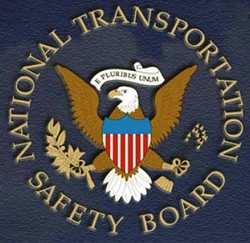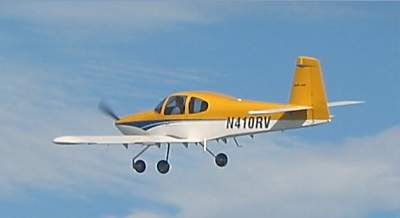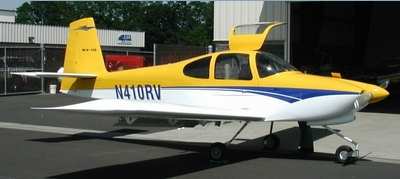Pilot/Builder May Have Rushed Through Some Procedures
 On November 2, 2007, at 0832
eastern daylight time, an experimental amateur-built Vans RV-10,
(N289DT), was substantially damaged when it impacted terrain near
Greenville, Pennsylvania. There was a subsequent fire which further
damaged the airplane. The private pilot/builder was fatally
injured. Day visual meteorological conditions prevailed for the
local flight that departed Greenville Municipal Airport,
Greenville, Pennsylvania. No flight plan was filed or required.
On November 2, 2007, at 0832
eastern daylight time, an experimental amateur-built Vans RV-10,
(N289DT), was substantially damaged when it impacted terrain near
Greenville, Pennsylvania. There was a subsequent fire which further
damaged the airplane. The private pilot/builder was fatally
injured. Day visual meteorological conditions prevailed for the
local flight that departed Greenville Municipal Airport,
Greenville, Pennsylvania. No flight plan was filed or required.
The NTSB report is quite lengthy. It read, in part:
"According to a family member, the pilot had driven to the
airport to practice "touch and go's" and to make sure everything
was functioning properly, prior to a planned afternoon trip in the
airplane with his family to Boston, Massachusetts.
Witness interviews were conducted by the Federal Aviation
Administration (FAA) and the Safety Board, and while no one saw the
airplane depart Greenville, the airplane was observed by a witness
at approximately 0800 traveling in a northwesterly direction at low
altitude, moving "fast" and sounding like it was "running strong
like a Ford Mustang (turbocharged) Cobra that the witness once
owned." At approximately 0825, the airplane was again observed;
this time by multiple witnesses. Descriptions varied between
witness statements as to the altitude, direction of flight, and
velocity of the airplane; however, the preponderance of witness
statements were that the airplane was flying north on the east side
of Pennsylvania State Route 58, and seemed to make a circle to the
left at approximately 500 feet above ground level (agl). It was
next observed to travel in a westerly direction, fly across Route
58 and make another turn to the left with the engine "revving up
and down" and losing altitude. When it reached approximately
50-feet agl, heading east, the airplane rolled wings level and
impacted a cornfield and a fireball erupted.

File Photo
The pilot held a private pilot certificate, with a rating for
airplane single engine land. His most recent FAA third class
medical certificate was issued on March 14, 2006. According to his
pilot logbook, he had accrued 221.4 total hours of flight
experience.
The experimental amateur-built airplane, was a four place, low
wing monoplane. It was equipped with a non-certificated
Eggenfellner E6T/220, water cooled, fuel injected, turbo-charged,
220 horsepower, six cylinder engine.
The airplane was equipped with a 4-blade, in-flight adjustable,
constant speed propeller. Examinations of the blade surfaces
indicated that the blades were not in rotation at time of impact.
The electric pitch control motor end bell and exterior nylon slide
exhibited severe melting. The blade retention nuts were also found
tightened approximately 1/4 inch tighter than the index marks
scribed on the hub. This however, did not appear to affect the
pitch rotation friction. Disassembly of the propeller hub revealed
that the pitch motor gearbox was intact and immobile, (as designed)
and held the last pitch angle selected when under no electrical
load. Examination of the blade shank assemblies, bearings, and
pitch slide assembly revealed no anomalies, and measurements of the
propeller pitch setting corresponded to a high pitch (cruise)
setting. Examination of the propeller controller revealed that it
was not the propeller controller that was manufactured by the
propeller manufacturer.
Examination of the remains of the electrical system revealed
that the batteries and contact relays had been exposed to the post
impact fire. Multiple wires showed no evidence of having being
connected prior to impact. Examination of the cabling connected to
the electrical system's contactor relays, revealed that a cable was
not secured to its corresponding terminal on the contactor
relay."
The report indicates that the variable-pitch system needed
consistent current from the electrical system. It also contains a
lengthy recounting of e-mails and conversations the builder had
with friends and other builders of the aircraft. Several
modifications had been completed or planned, and some witnesses
noted the builders impatience with the time it was taking to get
the project completed. He was also apparently unfamiliar with the
operation of the EFIS installed in the airplane, and examination of
the pilot's logbook revealed no evidence of the training required
by the FAA for operation of an airplane with an engine of more than
200 horsepower. Examination of the airplane's maintenance logbook
revealed that on July 10, 2007, the FAA issued a special
airworthiness certificate allowing operation of the airplane.

File Photo
There is far too much to re-cap here. A reading of the report
from the NTSB should be instructive to all builders about taking
care to follow procedures and have some patience. Flying your
airplane is not the place to discover you should have read the
manual.
 ANN's Daily Aero-Term (05.05.25): Circle To Runway (Runway Number)
ANN's Daily Aero-Term (05.05.25): Circle To Runway (Runway Number) ANN's Daily Aero-Linx (05.05.25)
ANN's Daily Aero-Linx (05.05.25) NTSB Prelim: De Havilland DHC-1
NTSB Prelim: De Havilland DHC-1 Classic Aero-TV: The Boeing Dreamliner -- Historic First Flight Coverage
Classic Aero-TV: The Boeing Dreamliner -- Historic First Flight Coverage Airborne-NextGen 05.06.25: AF Uncrewed Fighters, Drones v Planes, Joby Crew Test
Airborne-NextGen 05.06.25: AF Uncrewed Fighters, Drones v Planes, Joby Crew Test





